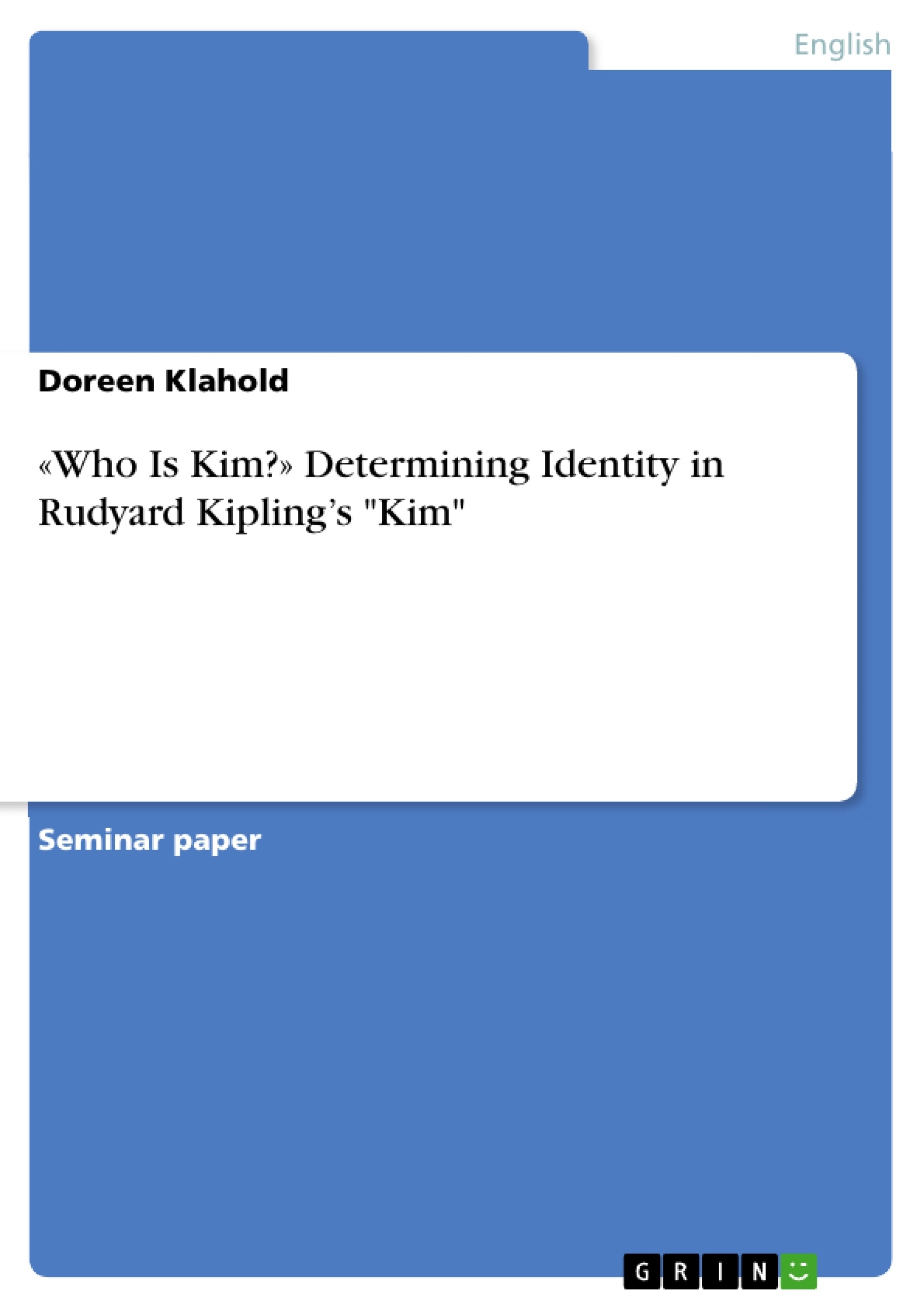During the whole novel, Kim - divided between his Irish and Indian identity - keeps asking who is actually is and constantly changes between his identities. In this essay I'm analysing in how far identity can be determined and what that means for the you Kim.
Table of Contents
- Introduction: Importance of Identity in Kipling’s Kim
- Kim’s Identities in Rudyard Kipling’s Novel
- Representation of Identity in Kim
- Development of Kim’s Identity throughout the Novel
- Kim’s ‘Final’ Identity and Kipling’s Intention
- Conclusion: Identity as an Individual Aspect of Personality
Objectives and Key Themes
The aim of this paper is to analyze the representation of identity in Rudyard Kipling’s novel Kim. The paper will explore the development of Kim’s identity throughout the story and examine the author’s intention in leaving Kim’s ‘final’ identity open to interpretation. By investigating the different cultural influences on Kim’s identity, the paper will argue that identity, as represented in Kim, is individual and not fixed.
- The importance of identity in a multicultural society like British India
- The influence of culture and upbringing on individual identity
- The complexities of determining identity, particularly in a colonial context
- The idea of multiple identities and the potential for conflict and loneliness
- Kipling’s exploration of the relationship between English and Indian cultures
Chapter Summaries
The introductory chapter explores the concept of identity and its relevance to Kipling’s novel. It highlights the various facets of identity, including origin, language, and culture, and emphasizes the complexity of defining identity in a multicultural setting like British India. The chapter also introduces the main theme of Kim’s identity quest and the significance of his repeated question, “Who is Kim?”
The second chapter examines the representation of identity in Kim. It discusses how identity is used to both recognize and differentiate individuals, showcasing Kipling’s portrayal of the colonial hierarchy. The chapter also analyzes the various aspects of identity in the novel, including class, gender, race, and culture, exploring the influence of each on Kim’s self-perception.
The third chapter traces the development of Kim’s identity throughout the novel. It highlights Kim’s initial contentment with his undefined identity and his subsequent struggle to reconcile his European and Oriental sides. The chapter further explores how Kim’s experiences at St. Xavier’s and his involvement in the Great Game complicate his identity formation.
The fourth chapter analyzes Kim’s ‘final’ identity at the end of the novel. It argues that Kim’s identity quest is ultimately a search that is never fully resolved. The chapter explores the complex nature of Kim’s multi-identity and suggests that Kipling intentionally avoids providing a definitive answer to the question of Kim’s true identity.
The concluding chapter summarizes the main points of the analysis. It emphasizes the individual and complex nature of identity and suggests that it is impossible to fully grasp or define. The chapter also reflects on the significance of Kim’s journey as a representation of the challenges of navigating multiple cultural influences in a colonial context.
Keywords
The primary focus of the paper is on the themes of identity and culture in Rudyard Kipling’s novel Kim. The key concepts explored include hybridity, colonialism, multiculturalism, and the complexities of defining identity. The paper also examines the various aspects of identity, including class, gender, race, religion, language, and customs, as well as the role of these factors in Kim’s self-perception.
- Arbeit zitieren
- Doreen Klahold (Autor:in), 2011, «Who Is Kim?» Determining Identity in Rudyard Kipling’s "Kim", München, GRIN Verlag, https://www.grin.com/document/230757




